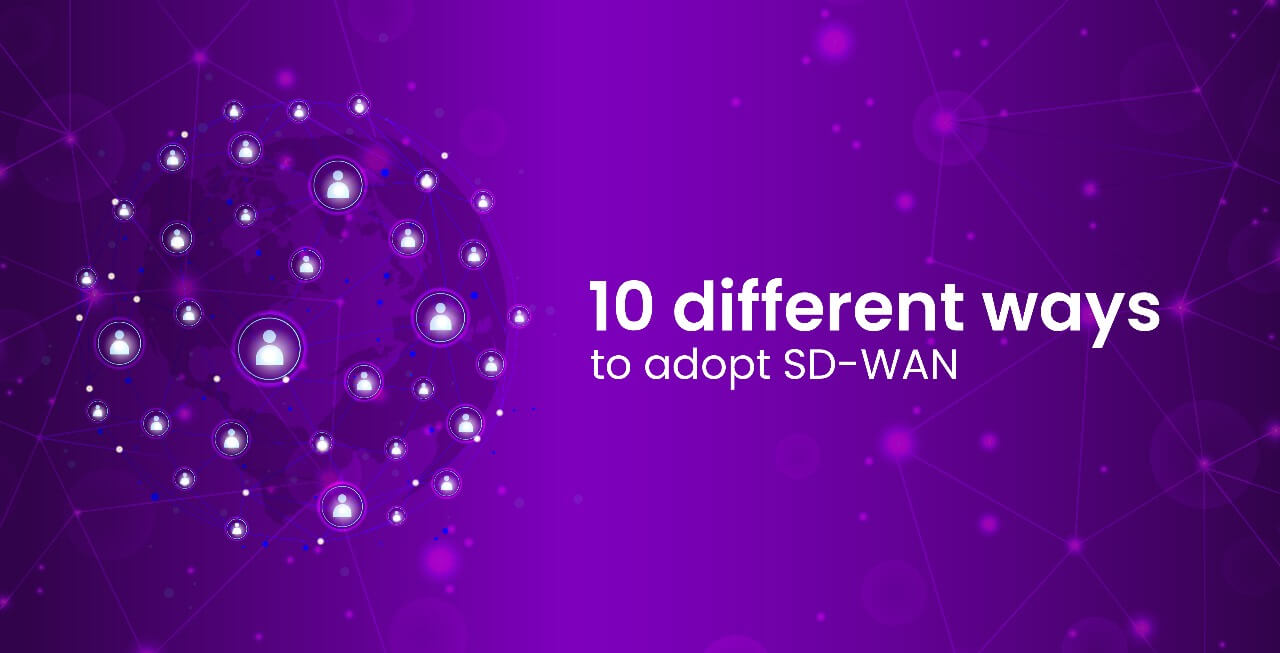In the ever-evolving landscape of networking technologies, organizations are continually seeking ways to enhance efficiency, flexibility, and overall performance. Software-Defined Wide Area Networking (SD-WAN) has emerged as a transformative solution, revolutionizing the way businesses manage and operate wide area networks.
Here’s a comprehensive guide to the various strategies organizations can employ to adopt SD-WAN, ensuring a seamless integration that aligns with their unique requirements and goals.
1. Phased Deployment
The journey towards SD-WAN adoption often begins with a phased deployment strategy. Organizations can initiate a pilot phase in one branch or department, allowing them to assess the impact and benefits of SD-WAN in a controlled environment.
The initial testing phase helps anticipate challenges and provides valuable insights for fine-tuning the implementation before a full-scale rollout. Gradual expansion across additional branches follows the successful completion of the pilot, ensuring a smooth and manageable transition.
2. Greenfield Deployment
For organizations embarking on new network implementations or undergoing major infrastructure upgrades, a greenfield deployment of SD-WAN is a better strategy.
By incorporating SD-WAN from the ground up, businesses can channel the technology’s full potential without the constraints of legacy systems. This approach is particularly advantageous for those building new branches or seeking a comprehensive network overhaul.
3. Brownfield Deployment
Unlike a greenfield approach, a brownfield deployment integrates SD-WAN into an existing network infrastructure without demanding a complete hardware overhaul. This strategy is ideal for organizations looking to modernize gradually, allowing them to benefit from SD-WAN without entirely replacing their current networking hardware.
4. Hybrid WAN
The hybrid WAN strategy involves combining SD-WAN with traditional connectivity options, such as MPLS, to create a balanced network architecture. This approach facilitates a smooth transition, leveraging the advantages of SD-WAN while maintaining existing connections. Hybrid WANs provide organizations with the flexibility to adopt SD-WAN at their own pace, ensuring a seamless coexistence of legacy and modern networking technologies.
5. Cloud-Native SD-WAN
As businesses increasingly rely on cloud-based applications and services, the cloud-native SD-WAN approach becomes crucial. This approach ensures seamless integration with cloud environments, optimizing network performance and responsiveness. Organizations adopting a cloud-native SD-WAN strategy benefit from improved agility, scalability, and cost-effectiveness in their cloud-centric operations.
6. Managed SD-WAN Services
For organizations with limited in-house expertise or resources, the managed SD-WAN services strategy provides an excellent solution. Choosing a reputable service provider to handle the deployment and ongoing management of SD-WAN allows businesses to focus on their core competencies while ensuring a professionally executed implementation. This approach is particularly beneficial for smaller enterprises or those seeking to optimize resource allocation.
7. Vendor-Agnostic Approach
To avoid vendor lock-in and ensure flexibility in component selection, organizations can adopt a vendor-agnostic approach to SD-WAN. This strategy allows businesses to choose different hardware and service providers based on their specific needs and preferences. By prioritizing interoperability, organizations maintain control over their network architecture and can adapt to evolving technological landscapes without being restricted by a single vendor’s ecosystem.
8. Integrated Security
Security is a top priority in today’s digital landscape. Opting for SD-WAN solutions with integrated security features is a strategic move that simplifies security management. By incorporating security measures directly into the SD-WAN infrastructure, organizations ensure a consistent security posture across the entire network. This approach minimizes the complexity of managing separate security solutions while providing robust protection against cyber threats.
9. Centralized Management
Efficient management is a key factor in the success of any SD-WAN deployment. Implementing centralized management tools allows organizations to monitor and manage their SD-WAN infrastructure from a single interface. This centralized approach enhances visibility, control, and troubleshooting capabilities, simplifying network administration and ensuring a more responsive and resilient network.
10. Continuous Optimization
The adoption of SD-WAN is not a one-time event but an ongoing process. Continuous optimization is a strategy that involves regularly assessing and fine-tuning the SD-WAN deployment to align with changing business requirements and technological advancements. This iterative approach ensures that the network remains dynamic, responsive, and optimized for performance over time.
Charting the Course to a Modern Network Future
SD-WAN adoption is a transformative journey that requires careful consideration of various deployment strategies. Whether organizations choose a phased, greenfield, or security-integrated approach, the key is to align the adoption strategy with specific business goals and requirements. Centralized management and continuous optimization further contribute to a successful SD-WAN deployment, ensuring that the network remains agile, secure, and responsive in the face of evolving technological landscapes. By navigating the diverse strategies available, organizations can confidently chart their course toward a modern, efficient, and future-ready network infrastructure.









0 Comments